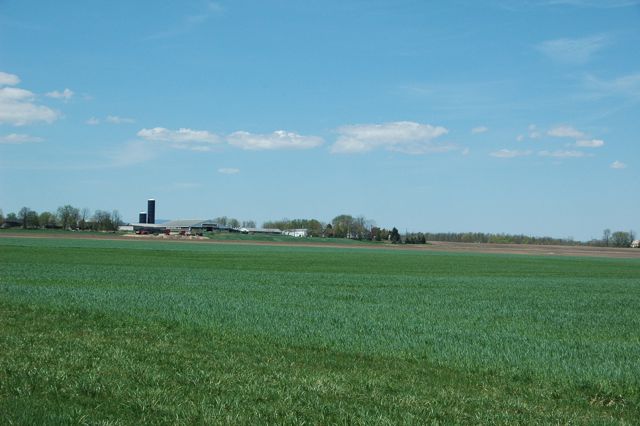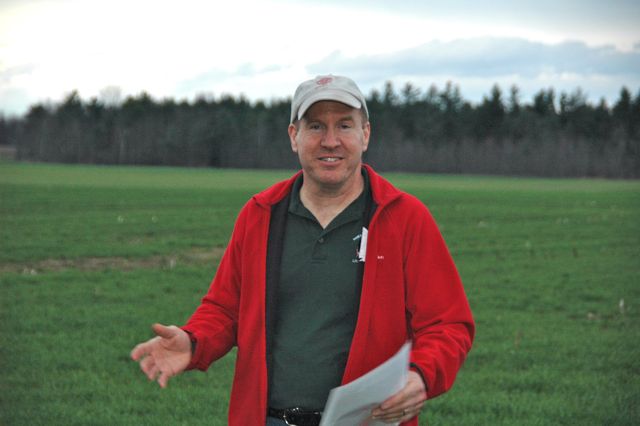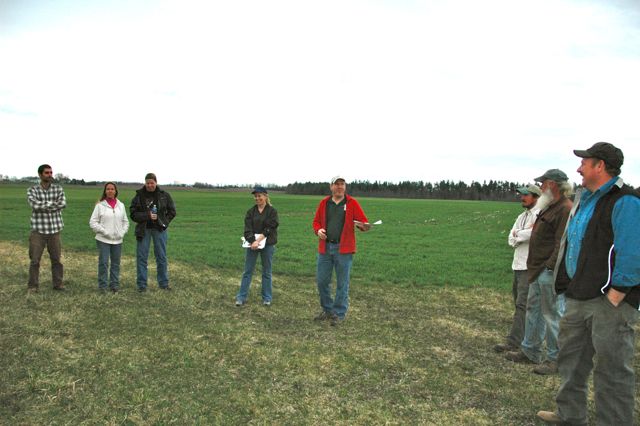Winter Rye may bring increased profits and reduced water pollution
Peru residents interested in agriculture may have noticed a plant peeking through the corn stubble this spring. If things go as planned, they’ll see even more of this crop next year. On April 24th, several farmers gathered at Dimock Farms on Route 22B to hear agriculture and water pollution experts describe the benefits of planting and harvesting Winter Rye. Peter Hager, a Clinton County Cornell Cooperative Extension educator, said that North Country farmers have never planted many cover crops, but his agency and USDA are encouraging them to give it a try. If successful, farmers will enjoy increased profits and the non-farmers will enjoy an improved environment.
Cover crops like winter rye reduce erosion, retain nutrients not utilized by the summer crops, add organic matter to the soil and improve soil health. They also compete with weeds, reduce pests and improve water infiltration. Farmers can reduce pesticide and herbicide applications, which ultimately lessens ground water, river and lake pollution. Winter Rye can also be harvested in the spring to provide additional feed.
Bruce Dimock was one of the first local farmers to planted Winter Rye. Dimock explained, “I planted 50 acres. I’ll harvest it in May and feed it to my dry cows and heifers.”
Cooperative Extension and USDA are hoping that 1000 acres will be planted countywide this year. USDA is even offering to share the cost of aerial seeding into standing corn or soybeans. The Soil and Water District also has a no-till drill which can be rented and used to establish Rye into corn stubble without tillage. Click the following for more information. NNY-Farms-Successfully-Growing-Cover-Crops-For-Dairy
As is the case in any business endeavor, Winter Rye’s success or failure depends on its benefits versus cost. Our short growing season can make growing cover crops challenging. If this program is successful, it would be a win, win situation for farmers and non-farmers alike – increased productivity, reduced costs, greater profits and improved water quality in streams, rivers and our precious Lake Champlain.
Posted: May 28th, 2013 under Adirondack Region News, Agricultural News, Education News, Environmental News, General News, Northern NY News, Peru/Regional History.





Comment from rich
Time May 29, 2013 at 9:20 am
A great idea, watch the little ausable river after a heavy rain. Runs brown.